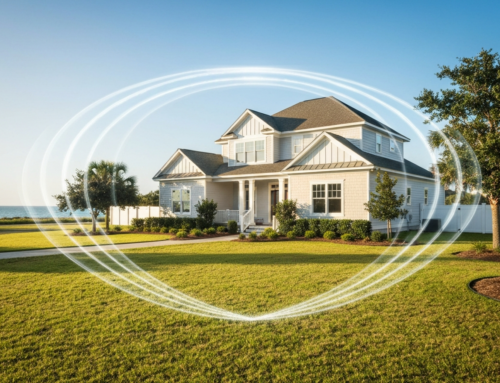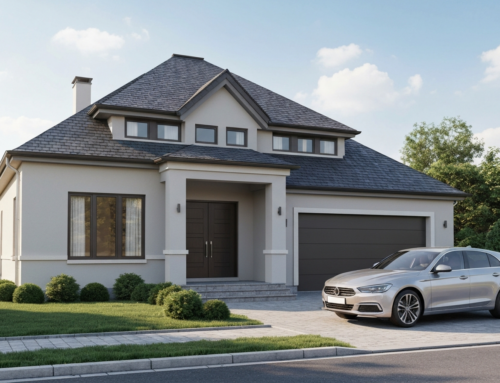Understanding Recent US Insurance Consumer Trends
The landscape of personal insurance in the United States is constantly evolving, shaped by a complex interplay of economic forces, technological advancements, and shifting consumer expectations. Recently, notable shifts have been observed in how individuals and families approach insuring their most valuable assets: their homes and vehicles. These changes reflect broader economic influences that are prompting many Americans to re-evaluate their insurance coverage and costs. Understanding these trends is crucial for consumers navigating the market and for insurers seeking to meet their needs effectively.
At the heart of these changes is how US consumer home auto shopping shifts are impacting the market. We’re seeing dynamics that suggest increased interest in exploring options, yet this doesn’t always translate directly into consumers switching providers. This fascinating behavior points to a market where affordability and value are paramount, but perhaps satisfactory alternatives are not always readily available or the process of switching is perceived as too cumbersome.
The insurance industry, particularly for personal lines like auto and home, operates on a foundation of risk assessment and financial stability. Insurers collect premiums to pay out claims. When the cost of those claims rises significantly – driven by factors like inflation, increased repair costs, or more frequent and severe weather events – premiums must adjust accordingly for insurers to remain solvent and able to pay future claims. This fundamental economic reality is a major driver behind the current consumer behavior observed in the market. Consumers are reacting to rising costs by shopping around, while insurers are adjusting their strategies to manage profitability in a challenging economic climate.
These trends aren’t isolated; they are interconnected. What happens in the auto market can influence consumer expectations in the home insurance market, and vice versa. Economic pressures felt by consumers impact their ability to afford rising premiums, making them more sensitive to price changes and more likely to shop around. However, the underlying reasons for the premium increases – higher costs for repairs, construction, and even medical care following accidents – mean that finding significantly cheaper coverage without sacrificing essential protection can be difficult.
The detailed examination of shopping and switching rates, particularly in auto and home insurance, provides valuable insights into the current state of the US personal insurance market. It highlights consumer engagement driven by financial concerns and the challenges insurers face in maintaining profitability while serving their customer base. This dynamic tension is shaping the strategies deployed by insurance companies and the decisions made by policyholders across the country.
The forthcoming sections will delve deeper into the specific trends observed in auto and home insurance shopping, explore the macroeconomic factors driving these changes, discuss how insurers are adapting their business models, and look ahead to what the future might hold for US consumer home auto shopping shifts. By understanding these nuances, consumers can make more informed decisions about their insurance needs, and insurers can better tailor their offerings to the current market reality.
Key Shifts in Auto Insurance Shopping Behavior
Auto insurance is often the most frequently interacted-with personal insurance product for many Americans. It’s a mandatory requirement in almost every state, and the cost is a significant line item in household budgets. Recent data indicates a clear increase in the number of consumers actively shopping for new auto insurance policies. This trend suggests that drivers are feeling pressure from current premium levels and are motivated to seek potentially lower rates or better value elsewhere.
According to recent reports, the shopping rate in the auto insurance sector has seen a noticeable uptick, both compared to the previous quarter and significantly year-over-year. Specifically, the shopping rate reached 14.1% in Q1 2025, a rise of 1.3 percentage points from the same period in the prior year. This elevated level of activity indicates that a substantial portion of the driving population is dedicating time and effort to comparing quotes and exploring different insurance providers. This heightened shopping activity is a direct reflection of consumers reacting to rising auto insurance costs. Many factors contribute to these increases, including the higher price of new and used vehicles, which impacts the cost of replacing a car after a total loss. Furthermore, the cost of repairs has escalated significantly due to advancements in vehicle technology (like sensors and complex electronics) and ongoing supply chain issues that affect the availability and price of parts.
Despite this surge in shopping, the rate at which consumers are actually switching their auto insurance providers has remained relatively stable. The switching rate in Q1 2025 was reported at 4.1%, a slight decrease from the previous quarter but a small improvement compared to a year ago. This disparity between shopping and switching rates is particularly interesting. It suggests that while consumers are motivated to look for savings, they may not be finding offers that are compelling enough to warrant making a change. Potential reasons for this could include:
- Competitive pricing across the board due to industry-wide cost pressures.
- The effort and time involved in the switching process, including completing applications and canceling old policies.
- Loyalty discounts or bundling benefits that make staying with the current insurer more attractive despite rate increases.
- Lack of significant price differentiation between quotes from different providers, potentially indicating that the underlying cost drivers are affecting all insurers similarly.
In response to the challenging market conditions characterized by rising claims costs, insurers are expected to pivot towards more traditional underwriting methods. This involves a greater focus on individual risk factors when determining premiums. Insurers will likely aim to increase overall policy growth while implementing premium adjustments, particularly for policyholders deemed to represent higher risk based on factors like driving history, location (garaging address plays a role!), and vehicle type.
The interplay between these factors means that consumers might see their rates increase even if they have a clean driving record, simply due to the overall increase in the cost of insuring vehicles. Understanding what influences car insurance rates is more important than ever for consumers hoping to manage their costs. Exploring options like telematics programs, which monitor driving habits, could also present opportunities for savings for safe drivers, though the adoption and effectiveness of telematics can help you save on auto insurance varies.
In summary, the auto insurance market is currently defined by high consumer engagement in shopping driven by cost concerns, but a less volatile switching rate, possibly indicating that the savings found are not substantial enough to overcome the inertia of switching. Insurers are focused on adapting their pricing and underwriting to reflect the true cost of risk and claims.
Decoding Changes in Home Insurance Shopping
Home insurance, a vital protection for property owners, is also experiencing shifts in consumer behavior, albeit with slightly different dynamics than the auto market. While not experiencing the same sharp increase in shopping rates as auto insurance, the home insurance sector has seen a steady level of activity, reflecting ongoing concerns about affordability and coverage needs.
The shopping rate for home insurance stood at 6.6% in Q1 2025, a modest increase from the previous quarter but slightly down compared to the rate observed a year prior. This suggests a consistently engaged segment of the homeowner population exploring their options, likely influenced by rising premiums. Homeowners have faced significant premium increases in recent years, driven by factors such as:
- Increased frequency and severity of catastrophic weather events (hurricanes, wildfires, severe storms), leading to higher claims payouts.
- The soaring cost of construction materials and labor, making rebuilding or repairing homes after damage significantly more expensive.
- Supply chain issues affecting the availability and price of building materials.
These rising costs directly impact how insurers price policies and contribute to consumer motivation to shop around for better rates or coverage. However, similar to auto insurance, the switching rate for home insurance tells a slightly different story. The switching rate was 2.5% in Q1 2025, a decrease from the prior quarter but a slight increase compared to the same period last year. This indicates that while some homeowners are successfully finding new providers, the majority who shop are not making the switch.
Several factors might explain the relatively lower switching rate in home insurance compared to the shopping rate:
- Complexity of Policies: Home insurance policies can be complex, with variations in coverage for different perils (like windstorms, hail, flood, or fire), deductibles (including specific hurricane deductibles or windstorm deductibles), and endorsements. Comparing policies accurately requires careful review.
- Bundling Benefits: Many homeowners bundle their home and auto insurance, receiving discounts that they might lose if they switch only one policy. The potential savings from switching home insurance alone might not offset the loss of a bundling discount. Bundling home auto insurance can indeed unlock savings.
- Underwriting Scrutiny: In areas prone to natural disasters, insurers may be tightening underwriting criteria or even reducing coverage availability, making it harder for homeowners to find comparable or better coverage when shopping.
- Mortgage Requirements: Mortgage lenders require homeowners insurance, and switching providers involves notifying the lender, adding an extra layer of administrative effort.
Renters insurance, while a smaller market segment, also showed interesting trends. The shopping rate for renters insurance was 6.2%, a slight decrease from the previous quarter but a notable increase from a year ago. This suggests growing awareness or need for renters coverage among the renting population. The switching rate for renters insurance saw a significant drop to 3.8% in Q1 2025 compared to the prior quarter, although it was still slightly higher year-over-year. The report noted that the relatively stable nature and lower cost of renters insurance likely contribute to less volatility in switching rates compared to auto or homeowners insurance.
For insurers in the home market, maintaining profitability is a primary focus. With the rising costs of home repairs and construction, insurers are adjusting rates and tightening underwriting strategies to reflect the increased risk and expense of paying claims. This could mean higher premiums for policyholders, especially those in areas with higher risks of natural disasters or areas experiencing rapid increases in construction costs. Homeowners should be proactive in understanding why homeowners insurance premiums are rising and explore options like increasing deductibles (while understanding the financial implications) or implementing risk mitigation measures to potentially lower costs where possible. Regular home maintenance, for instance, can prevent costly claims. Vital homeowner maintenance tips can go a long way in protecting your property and potentially impacting your insurance risk profile.
Economic Factors Influencing US Consumer Home Auto Shopping Shifts
The broader economic climate plays a significant role in shaping consumer behavior across all industries, and insurance is certainly no exception. Recent trends in US consumer home auto shopping shifts are closely tied to prevailing economic conditions, particularly inflation and the impact of tariffs on material costs. These macroeconomic factors have a direct and tangible effect on the cost of providing insurance coverage, which in turn influences premiums and consumer decisions.
Inflation is arguably one of the most significant economic forces impacting insurance costs. When the general price level for goods and services rises, so too does the cost of repairing or replacing insured property. For auto insurance, inflation drives up the cost of vehicle parts, labor rates for mechanics, and even the cost of medical care for injuries sustained in accidents. This means that the payout for a given claim is higher than it would have been in a less inflationary environment. Similarly, for home insurance, inflation directly impacts the cost of building materials like lumber, drywall, roofing supplies, and fixtures, as well as the wages for contractors and skilled tradespeople needed for repairs or rebuilding.
The increased cost of claims due to inflation necessitates higher premiums for insurers to maintain their financial stability. Insurers must collect enough in premiums to cover expected payouts and operational costs. As claims costs rise, premiums must follow suit. This creates a challenge for consumers who are also facing increased costs in other areas of their lives due to inflation, such as groceries, fuel, and housing. The cumulative effect of rising expenses can make rising insurance premiums particularly burdensome, prompting consumers to look for ways to reduce costs, often by shopping for cheaper insurance. However, as discussed, finding significantly lower rates can be difficult when the underlying cost drivers affect all insurers.
Beyond general inflation, specific factors like tariffs can also exert pressure on insurance costs. Tariffs on imported goods, particularly raw materials like steel, aluminum, and other components used in manufacturing vehicles or construction materials, directly increase the cost of these items. Higher costs for steel or aluminum mean that vehicle parts are more expensive to produce and repair. Similarly, tariffs on construction materials can increase the cost of rebuilding homes.
The uncertainty surrounding trade policies and tariffs adds another layer of complexity for insurers. They must anticipate potential future cost increases when setting current premium rates, which can lead to more conservative pricing or rate increases to hedge against this uncertainty. This impacts consumers by contributing to higher premiums for both auto and home policies. For instance, if the cost of wood increases significantly due to tariffs or supply shortages, the cost to repair a roof or structural damage after a storm also increases, requiring insurers to raise rates to cover that potential expense.
The confluence of inflation, rising material and labor costs, and potential impacts from tariffs creates a challenging environment for both consumers and insurers. Consumers are motivated to find savings due to pressure on their household budgets, contributing to the increased shopping rates. Insurers are focused on accurately pricing risk and managing profitability in the face of escalating claim costs, which can lead to higher premiums and tighter underwriting, potentially limiting consumers’ ability to find significantly cheaper alternatives when they shop.
These economic factors are not expected to dissipate quickly, meaning their influence on US consumer home auto shopping shifts is likely to continue. Understanding these broader economic pressures helps explain why insurance costs are rising and why consumers are behaving the way they are in the market. It underscores the importance of consumers staying informed and proactive in managing their insurance needs and budgets.
How Insurers Are Responding to Market Dynamics
In the face of elevated claims costs, rising repair expenses, and shifting consumer behavior marked by increased shopping activity, insurance companies are implementing various strategies to navigate the current market dynamics. Their primary goals include maintaining profitability, ensuring financial stability to pay claims, and retaining customers where possible. The responses from insurers directly influence the options and costs available to consumers.
One of the most visible responses is the adjustment of premium rates. With the cost of claims payout increasing due to inflation and other factors, insurers are seeking regulatory approval for rate increases across both auto and home insurance lines. These increases are necessary to align premiums with the higher cost of risk and claims. For homeowners, this means rates are going up to reflect the higher cost of rebuilding and repairs. For drivers, increased premiums account for the rising costs of vehicle repairs and replacements, as well as medical expenses.
Beyond rate adjustments, insurers are also refining their underwriting practices. Underwriting is the process insurers use to evaluate the risk of insuring a particular policyholder and determine the appropriate premium. In the current environment, this means:
- More Granular Risk Assessment: Insurers are focusing more intently on individual risk factors. For auto insurance, this might involve deeper analysis of driving records, vehicle types, and locations (the link between garaging address and car insurance is a classic example) to price policies more accurately based on the likelihood of a claim.
- Tighter Underwriting Guidelines: For home insurance, particularly in areas prone to severe weather, insurers may be adopting stricter criteria for issuing new policies or renewing existing ones. This could involve requirements for specific home features (like roof type or age) or limitations on coverage in high-risk zones. Insurers are keenly aware of the financial impact of climate events, and understanding climate events driving homeowners insurance challenges is central to their strategy.
- Increased Focus on Risk Mitigation: Some insurers are encouraging or even incentivizing policyholders to take steps to reduce their risk. For home insurance, this could mean discounts for installing smart home security systems, reinforced roofs, or water leak detection devices. For auto insurance, promoting safe driving habits or utilizing telematics can be part of this strategy.
Insurers are also paying close attention to customer retention, especially in a market where shopping rates are high. While rate increases are often necessary, insurers are also exploring ways to retain valuable customers. This might include:
- Offering loyalty discounts or preferred pricing for long-term policyholders.
- Improving customer service to make the claims process smoother and less stressful.
- Providing tools and resources to help customers understand their coverage and identify potential savings opportunities.
- Highlighting the value of comprehensive coverage beyond just the lowest price point, emphasizing the importance of adequate protection for assets.
The goal is to balance the need for profitability with the desire to remain competitive and provide value to customers. Insurers are also exploring technological advancements to improve efficiency in operations, claims processing, and risk assessment. While the reference material mentions technology trends in auto insurance, the core focus remains on adapting traditional insurance principles to a changing economic and environmental landscape.
Ultimately, the responses from insurers are driven by the fundamental economics of the insurance business and the need to adapt to external pressures. These strategies, while necessary for insurers, directly impact the consumer experience through potentially higher premiums and altered policy availability or terms. Consumers should be prepared for these changes and proactive in understanding how their individual risk profile and location affect their insurance options and costs. This adaptability from both sides is key to navigating the current market.
Navigating the Future of Home and Auto Insurance Shopping
Looking ahead, the trends observed in US consumer home auto shopping shifts are likely to continue being influenced by the interplay of economic conditions, evolving risks, and consumer expectations. The future landscape of insurance shopping will require both consumers and insurers to remain agile and adaptable.
For consumers, the expectation of continued pressure on premiums for both home and auto insurance seems probable, at least in the short to medium term. As long as inflation, repair costs, and the frequency/severity of weather events remain elevated, the cost of providing insurance will likely continue to rise. This means that shopping around will remain a common practice as consumers seek the best value for their insurance dollar. However, the effectiveness of shopping in yielding significant savings may still be limited if underlying cost drivers affect all insurers relatively equally.
This suggests that consumers should broaden their approach beyond simply looking for the lowest price. Focusing on the value proposition is critical. This involves:
- Understanding Coverage Needs: Ensuring adequate coverage is in place is paramount. Saving money by reducing coverage below what is necessary to protect your assets can be a costly mistake in the event of a claim. Understanding concepts like replacement cost vs. actual cash value for homeowners or adequate liability limits for auto insurance is crucial.
- Improving Insurability: Taking steps to reduce your risk profile can potentially lead to lower premiums. For homeowners, this could involve preventative maintenance, installing safety features, or fortifying against specific local risks like wind or flood. For drivers, maintaining a clean driving record and considering telematics programs can be beneficial.
- Working with Knowledgeable Agents: An independent insurance agent can help consumers navigate the complex market, compare policies from multiple carriers, and identify potential discounts or coverage gaps. They can explain the nuances of different policies and help tailor coverage to specific needs and budgets.
The role of technology is also expected to grow in influencing US consumer home auto shopping shifts. Online comparison tools and digital platforms make it easier for consumers to get multiple quotes quickly. However, the ease of getting quotes doesn’t replace the need to understand what that quote actually covers. Furthermore, technologies like telematics in auto insurance are becoming more mainstream, allowing insurers to base premiums more directly on individual driving behavior, which could benefit safer drivers. What’s new auto insurance technology 2025 top trends articles can provide more insight into these developments.
For insurers, the future will involve continued adaptation of pricing models, underwriting practices, and customer engagement strategies. Data analytics will become even more critical for accurately assessing risk and predicting future claims costs. Insurers will need to balance the need for profitability with the challenge of maintaining affordability for consumers, particularly in essential lines like home and auto insurance.
Furthermore, addressing the impact of climate change and increasing weather volatility will remain a major challenge for the home insurance market. This may necessitate innovative approaches to risk pooling, mitigation, and potentially government involvement in providing backstops for catastrophic risks. Understanding the increasing frequency and severity of weather events is essential when considering homeowners coverage, including potentially needing flood insurance depending on your location and risk assessment. Knowing how to complete a flood risk assessment is a proactive step every homeowner should consider.
In conclusion, the future of US consumer home auto shopping shifts will likely be characterized by informed consumerism driven by cost sensitivity and a market where insurers are constantly adjusting to economic and environmental realities. Success for consumers will hinge on understanding their needs, proactively managing their risk, and leveraging resources to find the best combination of coverage and value. For insurers, success will depend on their ability to accurately price risk, operate efficiently, and adapt to evolving market conditions while effectively communicating value to their customers.
Have questions? Contact us here.






